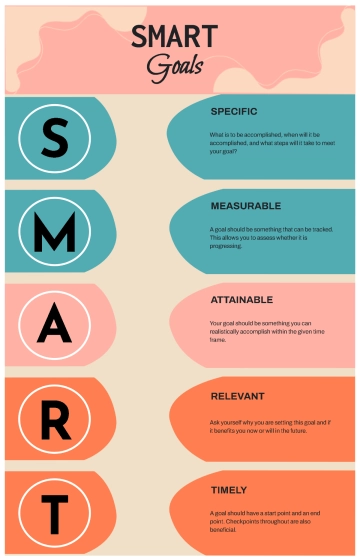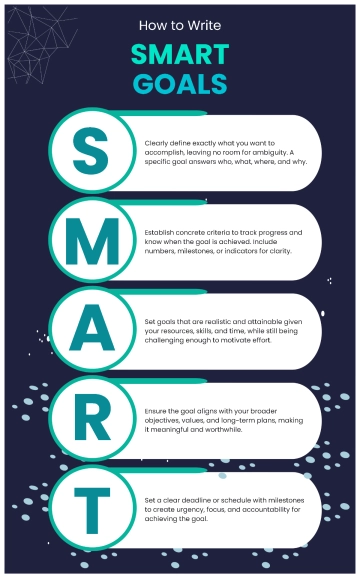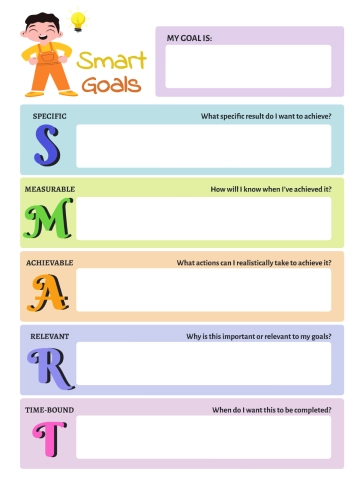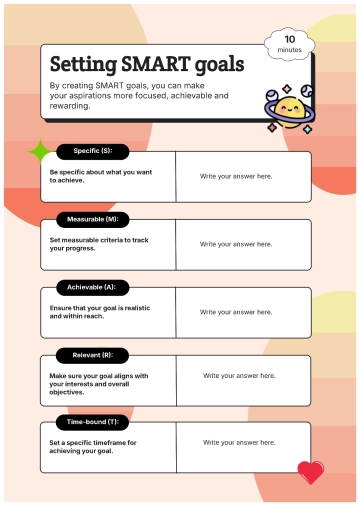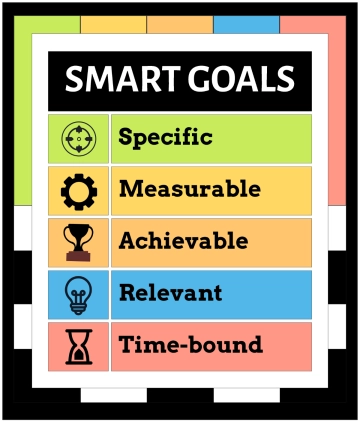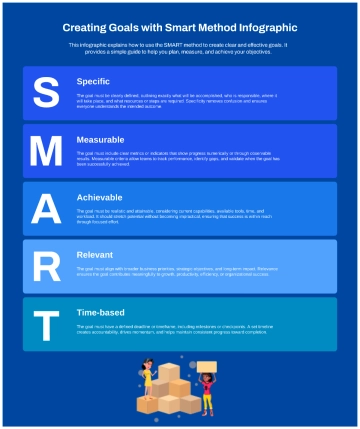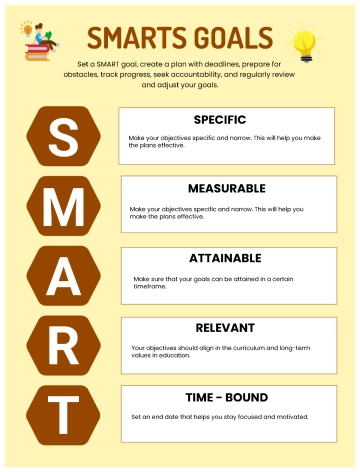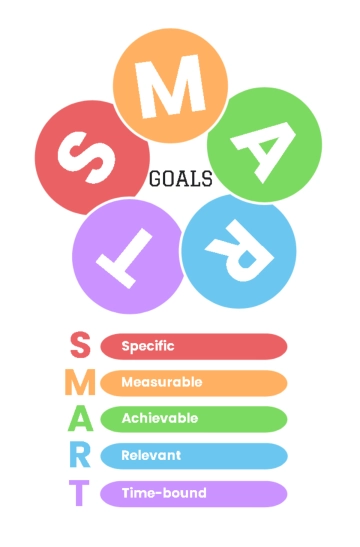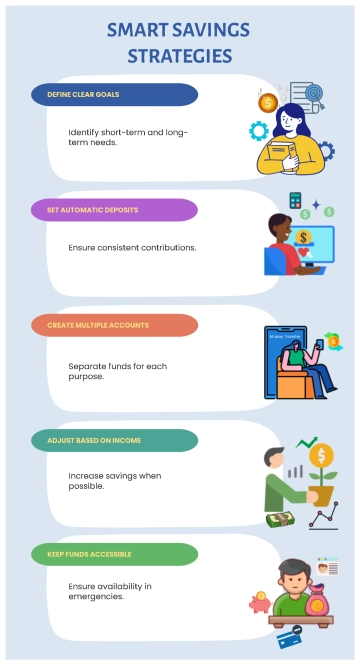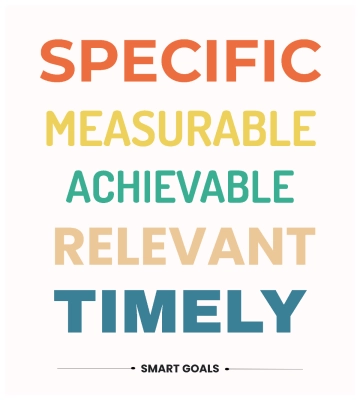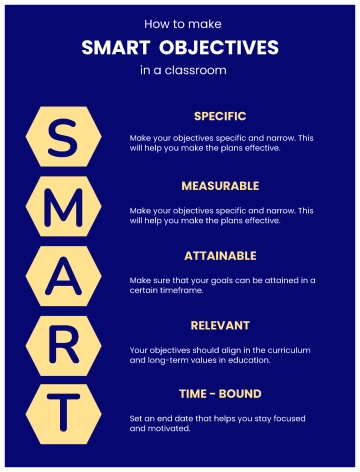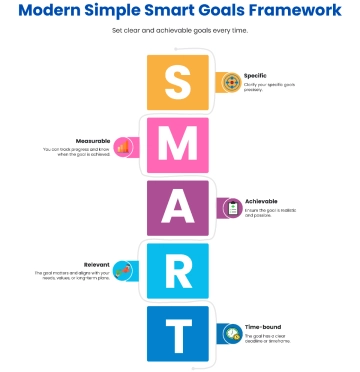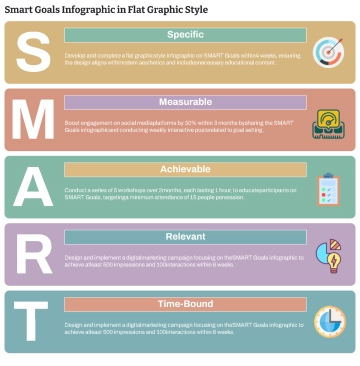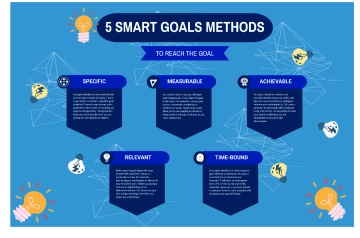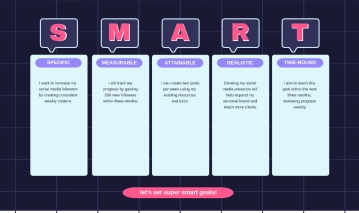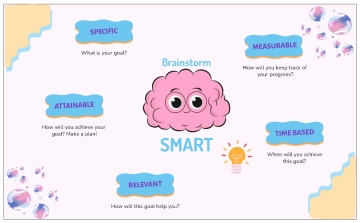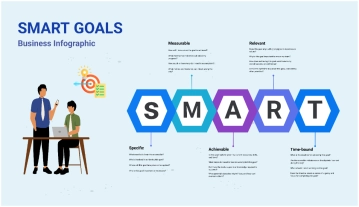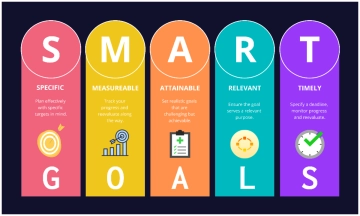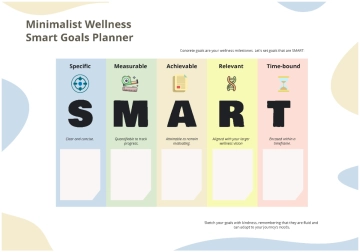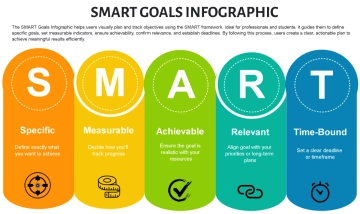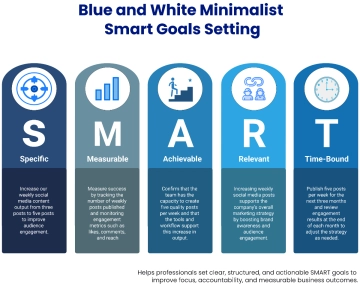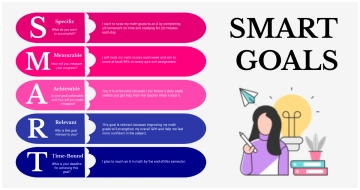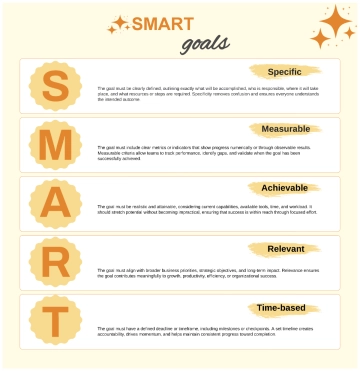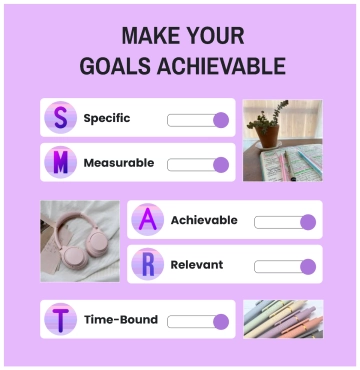Free SMART Goals Therapy
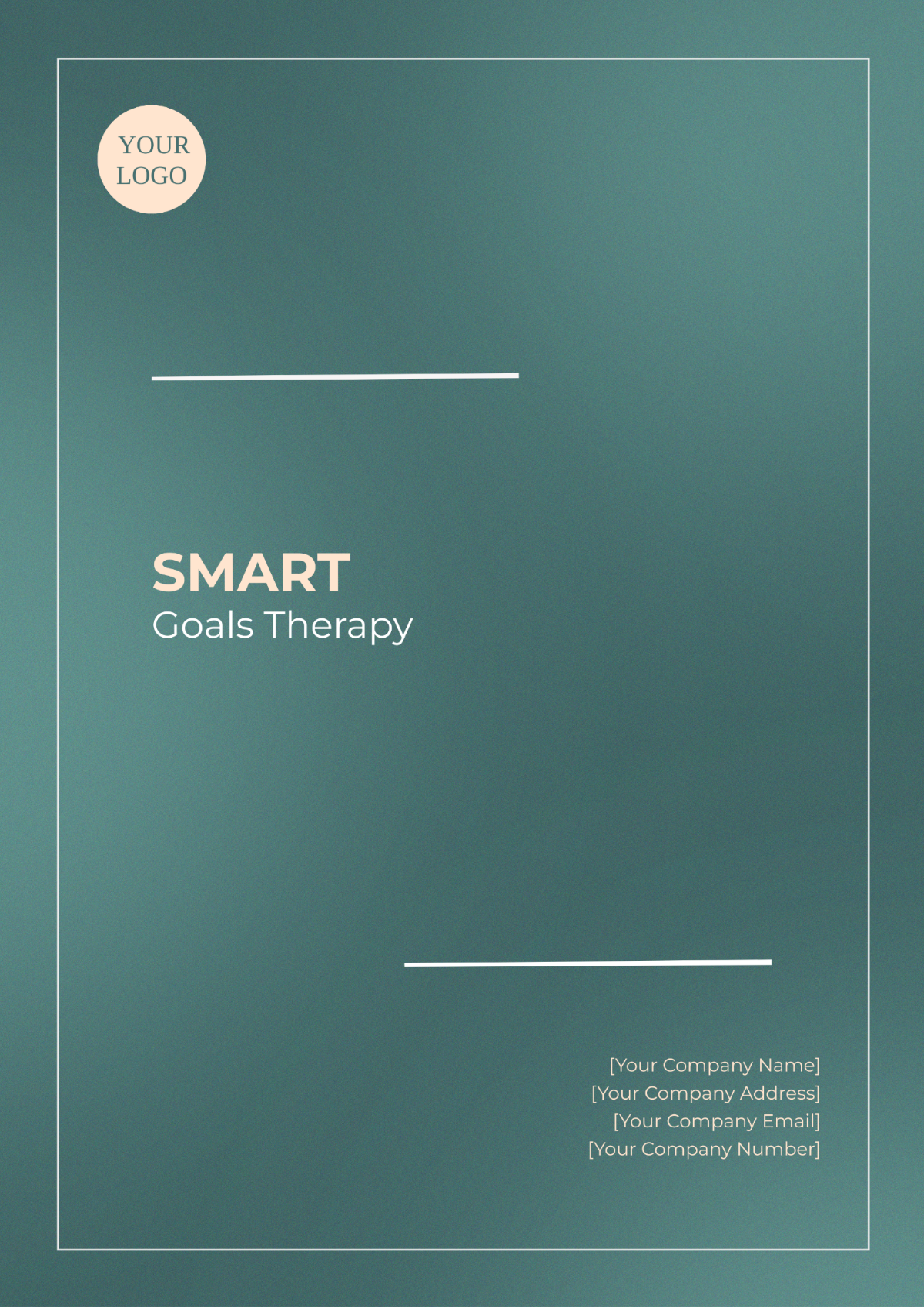
Prepared by: [YOUR NAME]
The SMART framework is a goal-setting method that ensures objectives are clearly defined, measurable, realistic, aligned with broader objectives, and time-bound. This approach is particularly effective in therapeutic settings, where it is essential to establish and track progress towards specific outcomes.
SMART Goals Criteria
SMART | Details |
|---|---|
Specific | Clearly define the objective by specifying the who, what, where, and why. Example: "Increase patient engagement in therapy sessions by using interactive techniques." |
Measurable | Set criteria for measuring progress and attainment. Example: "Track patient engagement levels through weekly feedback surveys and session participation records." |
Achievable | Ensure the goal is realistic and attainable. Example: "Implement 3 new interactive therapy techniques over the next month to enhance patient engagement." |
Relevant | Align the goal with broader objectives. Example: "Improving patient engagement will support better therapeutic outcomes and overall patient satisfaction." |
Time-bound | Set a deadline for the goal. Example: "Achieve a 20% increase in patient engagement within 6 months by utilizing new interactive techniques." |
Action Plan
The action plan outlines the specific steps required to achieve the SMART goals. Each step should be clear, actionable, and include a timeline for completion.
Identify Interactive Techniques: Research and select 3 interactive therapy techniques that can be integrated into sessions.
Timeline: Within 1 week.
Training: Conduct training sessions for therapists to ensure they are equipped to implement the new techniques.
Timeline: Within 2 weeks.
Pilot Implementation: Introduce the new techniques to a small group of patients and gather initial feedback.
Timeline: Weeks 3-4.
Full Implementation: Roll out the techniques across all therapy sessions.
Timeline: Starting Week 5.
Monitoring and Feedback: Use weekly surveys and session participation records to monitor engagement levels.
Timeline: Ongoing, with bi-weekly reviews.
Accountability
Establishing accountability ensures that each step in the action plan is executed effectively. Assign responsibilities to specific team members and set up regular check-ins to monitor progress.
Therapy Coordinator: Responsible for researching and selecting interactive techniques.
Lead Therapist: Oversees the training and implementation phases.
Data Analyst: Monitors engagement levels and provides regular feedback to the team.
Clinic Manager: Ensures overall adherence to the timeline and SMART goals.
Notes
Patient Feedback: Incorporate patient feedback throughout the process to refine and optimize the interactive techniques.
Adjustments: Be flexible and willing to adjust the action plan if initial results are not meeting expectations.
Documentation: Keep detailed records of the techniques used, patient engagement levels, and any adjustments made to the plan.
This comprehensive plan ensures that the SMART goals for increasing patient engagement in therapy sessions are clearly defined, actionable, and trackable, ultimately leading to improved therapeutic outcomes.
- 100% Customizable, free editor
- Access 1 Million+ Templates, photo’s & graphics
- Download or share as a template
- Click and replace photos, graphics, text, backgrounds
- Resize, crop, AI write & more
- Access advanced editor
Enhance your therapeutic practice with the SMART Goals Therapy Template, designed to support personalized goal-setting and progress tracking. This template is perfect for therapists and clients alike. Customizable and editable in our Ai Editor Tool, it’s available on Template.net to assist in reaching your therapy objectives with clarity and precision.
